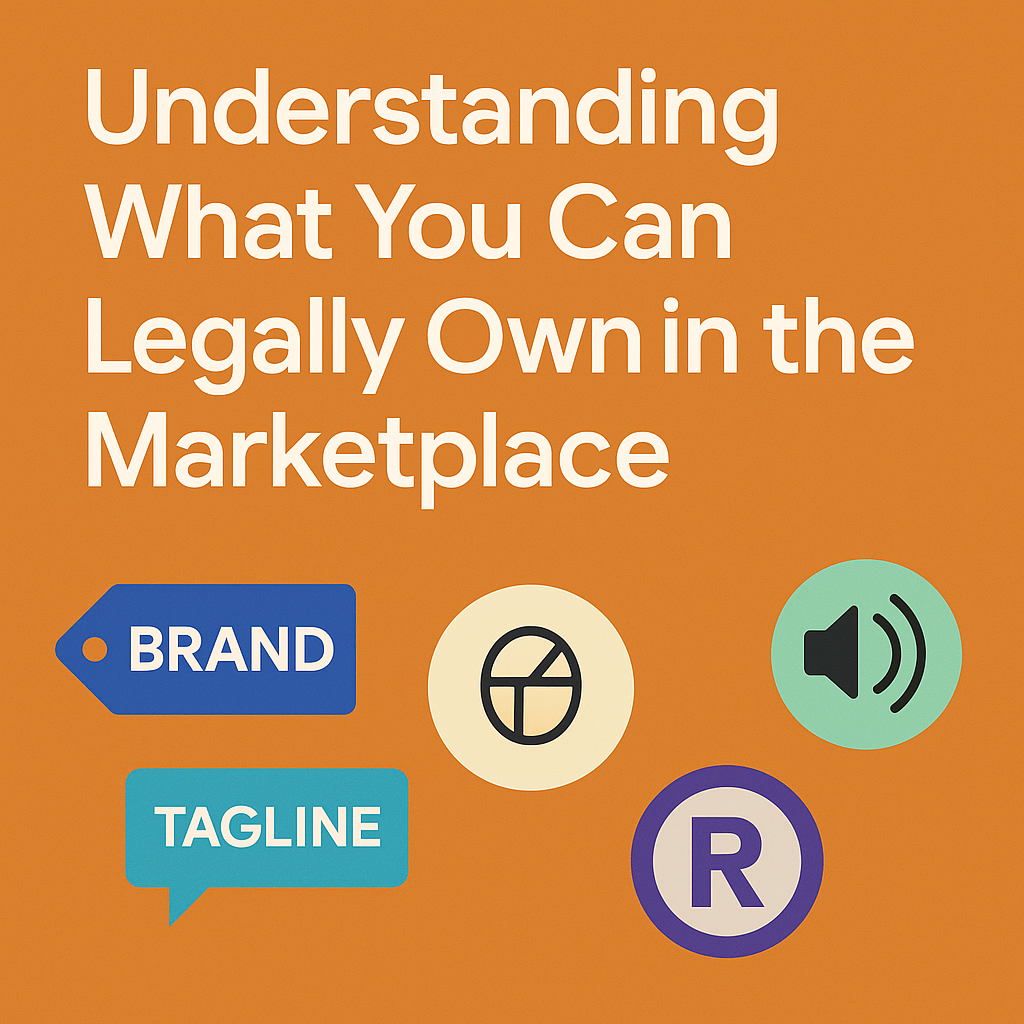Can I Trademark Anything? A Deep Dive into What You Can and Can’t Protect

Understanding What You Can Legally Own in the Marketplace
In today’s fast-paced and competitive market, your brand is your biggest asset. It’s how customers remember you, talk about you, and choose your products.
But can you trademark anything?
Not quite.
Many businesses think they can slap a ™ on any word or design and call it theirs—but trademark law doesn’t work that way.
This guide explains what you can—and can’t—trademark, and how to choose brand assets that are actually protectable under Indian law (and globally).
What Is a Trademark?
A trademark is a legally protected word, name, logo, sound, color, or design that uniquely identifies the source of goods or services.
Key Benefits of a Trademark:
-
Protects your brand from imitation
-
Builds customer trust and loyalty
-
Adds legal credibility and value to your business
-
Creates a unique identity in the market
What Can Be Trademarked?
To be eligible, a mark must be distinctive, not generic, and not misleading. Here are common examples:
1. Brand Names
-
Examples: Google, Zomato, Airbnb
-
Should be creative, coined, or distinctive—not too generic.
2. Logos
-
Visual identifiers (emblems, icons) that represent your brand
-
Must be unique and not similar to existing trademarks
3. Slogans & Taglines
-
Example: “Because You’re Worth It” (L’Oréal)
-
Catchy phrases that reflect your brand’s tone or mission
4. Sounds
-
Recognizable audio cues like the Intel chime or MGM lion roar
5. Colors & Scents (Rare but possible)
-
Example: Pink insulation (Owens Corning), Play-Doh’s smell
-
Must have strong consumer association with the brand
6. Product Shapes & Packaging (Trade Dress)
-
Example: Coca-Cola bottle
-
Must be unique and serve as a brand identifier
What Cannot Be Trademarked?
Trademark law exists to prevent unfair monopolies over generic or common-use terms. Here’s what you can’t register:
1. Generic Terms
-
Example: “Computer” for a tech company
-
Everyone should be able to describe what they sell
2. Descriptive Words
-
Example: “Cold Water” for a beverage
-
Unless the term has gained secondary meaning over time
3. Misleading or Deceptive Names
-
Example: Calling polyester “100% Silk”
-
Trademarks that lie about quality or origin are rejected
4. Offensive or Immoral Content
-
Hate speech, racial slurs, obscenities, or vulgar terms
5. Geographic Descriptors
-
Example: “Swiss Chocolates” (if made in India)
-
Unless they’ve gained distinctiveness unrelated to geography
6. Government Symbols or Flags
-
Indian flag, national emblems, Red Cross logo, etc. are not allowed
7. Confusingly Similar Marks
-
Any name, logo, or symbol that resembles an already registered trademark in your class will be refused
Common Trademark Mistakes to Avoid
-
Skipping the trademark search
→ Always check for existing trademarks before applying -
Choosing descriptive names for SEO
→ Great for search, bad for trademarks -
Ignoring global implications
→ If you plan to expand abroad, check international trademark databases -
Using ™ without legal registration
→ ™ gives weak protection. Register to use ® and secure strong legal rights
Conclusion: Be Strategic About What You Trademark
Not everything creative is legally protectable.
A strong trademark is:
-
Unique
-
Not misleading or generic
-
Memorable and enforceable
Take the time to research, select, and register the right brand assets so you can build a business that’s secure and scalable.
Comments
Post a Comment